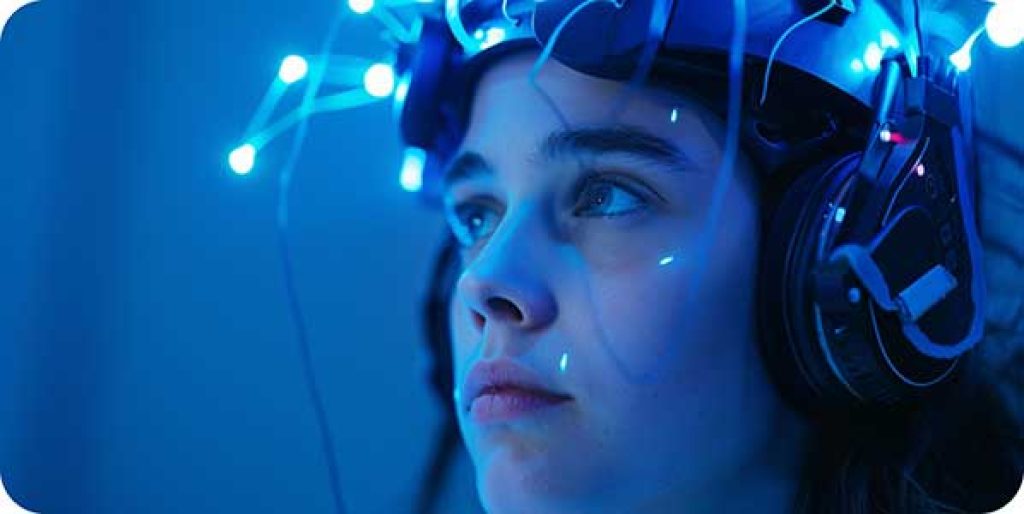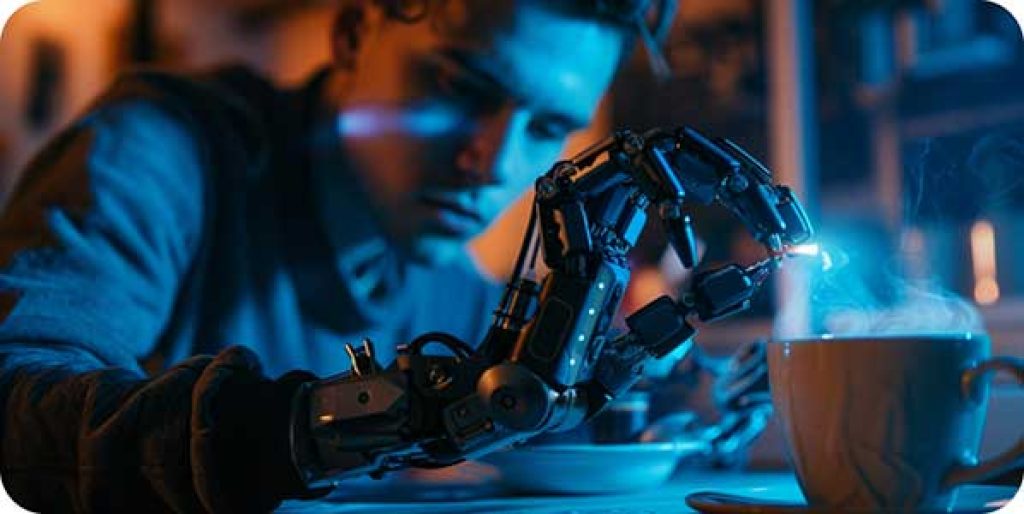How Brain-Computer Interfaces Impact the Future of Accessibility
How BCIs Are Reshaping Accessibility Expectations
Brain computer interfaces (BCIs) are revolutionizing our understanding of technology by connecting the infinite power of the human mind to the practical functionality of machines. These systems link brains to devices, allowing people to control devices using brain activity, just as we already do with integrated parts of the human body. BCIs translate electrical signals created in the brain into direct commands, opening fascinating possibilities for the future.

There are two main types of BCIs:
Non-invasive BCIs use sensors placed on the surface of the scalp to detect electrical signals from the brain. The signals are then interpreted by a computer program to determine the user's intent. This approach is widely used due to its safety and ease of use.
Invasive BCIs involve surgically implanting electrodes directly into the brain to interpret neural firing. This allows for a more precise reading of brain activity but is, of course, a more complex and risky procedure.
Currently, brain computer interface infrastructures are primarily used in two ways: one, as assistive technology, utilizing BCIs to control computers, prosthetic limbs, and other devices for people who cannot use traditional input methods like keyboards, mice or joysticks. And two, they’re used as augmentative communication systems, so people with speech impairments or articulation disorders can express themselves, by translating their thoughts into synthetically spoken words or into text displayed on a screen. They help reclaim mobility and rapid communication for people with severe physical impairments or paralysis who have lost those abilities.
In theory, BCIs can also be used to control everyday devices and technology, such as transmitting instructions to computers or smart gadgets without physical movement. However, while prototypes exist that can be used, for example, to control lights, thermostats, and other appliances, they are not yet commercially available for this purpose.
BCIs And The Accessibility Revolution
BCI technology has the potential to dramatically improve accessibility for people with severe physical or neurological disabilities. Non-invasive BCIs are already being used to help people with conditions like amyotrophic lateral sclerosis (ALS) and spinal cord injuries control assistive technologies to communicate.
Speech Approaching The Rate Of Us
While we don’t tend to think of the natural human pace in speech or physical movement as happening at breakneck speed, it’s actually incredibly fast in terms of processing and task execution. A 2023 study showed significant progress in using BCIs to bring back speech capabilities for people with ALS, at a word error rate of 9.1% in a 50-word vocabulary, an error reduction of 2.7x from recent advanced BCI speech technologies. The study participant’s speech attempts were decoded and translated into understandable speech at 62 words per minute (WPM). This speech rate hit new highs: it was 3.4x faster than earlier records, trailing the speed of natural verbal conversation: 160 WPM. Still not there, but closing in quickly. We can hope that BCI speech will catch up to us.

New BCI Techniques For Brain-Based Body Control
Most BCIs use electroencephalography (EEG) to classify specific states in the brain, which acts more as an on-off switch for movement. But this method doesn’t offer intuitive control of gesture and motion. A 2024 scientific report on the “Feel Your Reach” project shows that new ways are being developed to offer a more natural sense of body control, working from a continual interpretation of brain-based gesture intent. That is, by reading when the brain thinks about moving your arm, it can more easily help you move your arm in a natural and intuitive way. This is a critical function for people with paralyzing spinal cord injuries (SCI). Because hand and arm movement are so pivotal to human independence and quality of life, it’s what SCI patients wish for the most.
Coming Up Fast: BCI Advances
Emerging BCI technologies with higher accuracy and improved user interfaces will allow for more intuitive control and a wider range of applications. In the near future, advancements in neural signal processing and machine learning will likely lead to more nuanced and efficient interpretations of neural data, allowing for more fluid control of prosthetic limbs and devices, including wearable devices that move the user’s physical body. These advancements could equip people with even the most severe disabilities with the tools they need to live more independent lives.
BCI Technology For Disabilities
BCI technology offers breakthrough possibilities for people with a wide array of physical and neurological disabilities. Individuals with conditions such as spinal cord injuries, stroke, and cerebral palsy, which can impair movement and communication, may gain significantly from BCI applications. Bypassing the traditional pathways that these conditions disrupt, BCIs can restore a level of independence and interaction hitherto unattainable. Neurological conditions like amyotrophic lateral sclerosis (ALS) or multiple sclerosis (MS), which progressively impair motor functions, can also mend mobility and thus quality of life through BCI technology. Users with these conditions can currently leverage BCIs for communication and mobility facilitation, and potentially at some point, environmental control.
Brain-computer interface systems and tech continue to demolish previously insurmountable barriers, offering hope and tangible solutions for accessibility challenges. Through its evolution, BCI promises to redefine the landscape of disability aids, turning science fiction into reality for people with severe impairments and disabilities, restoring their natural-born freedoms in an increasingly digital world.
BCI's Impact on Key Areas
BCI technology has the potential to revolutionize accessibility in several critical areas:
- Communication
BCIs provide new ways for people with communication disorders to express themselves, translating neural signals into words: speech or text. While this type of decoding is not perfect, it’s relatively early in the technology mix of BCI and other recent innovations including AI and machine learning, and we may expect great advances in the near future. - Web Accessibility
BCIs present a unique method to interact with web and digital services. They could detour around traditional input methods like keyboards and mice, allowing users with limited mobility to navigate online with ease, just as web accessibility overlays can help with other types of disabilities. - Mobility and Independence
Through the integration of BCIs with prosthetics and mobility aids, individuals with mobility challenges can regain their ability to navigate physical environments autonomously. This includes the operation of wheelchairs, prosthetic limbs, and other devices that facilitate movement and daily activities. BCIs are already able to control prosthetic limbs and assistive devices, but currently the results remain simplified and somewhat jerky or stiff in motion. New advancements in the technology could allow control with greater precision and fluidity, increasing independence for people with motor impairments. - Education and Employment
BCI-powered interfaces could open doors to educational and employment opportunities for people with disabilities who were previously limited by physical constraints. - Rehabilitation and Neurotherapy
BCIs are pivotal in the rehabilitation of patients with neurological disorders and injuries. They assist in the restoration of functions such as movement and speech by reinforcing neural pathways and substantially aiding in the recovery process through targeted brain exercises and feedback. - Environmental Control
Already in existence in prototype form, BCI controls could allow users to manage lights, thermostats, and other smart devices using only their thoughts.

Recent Tech Accelerating The Evolution Of Accessibility
In addition to BCI, these new advancements are transforming accessibility. Some of them can be integrated with BCI systems, while others offer access in other ways:
- Adaptive Interfaces
Current technologies now adapt in real-time to the user’s abilities, modifying user interfaces to meet individual needs, making digital platforms more inclusive. - Eye-Tracking Software
This tech allows users to control computers and other devices using their eye movements. - Voice Recognition
Advances in voice recognition software have made digital content more accessible, enabling users with physical impairments to interact with technology using voice commands. - Augmented Reality (AR) and Virtual Reality (VR)
AR and VR technologies offer immersive educational and social experiences that are accessible to individuals with various disabilities, creating environments that adapt to their needs. - Artificial Intelligence (AI)
AI is used to predict and interpret user intentions from neural data more accurately, improving the efficiency and responsiveness of multiple types of systems, including BCIs. - Wearable Technology
Wearables, some of which can be integrated with BCI systems, assist individuals in managing their conditions and maintaining independence. They can monitor health in real-time and provide feedback. In some cases, they can even help restore mobility, such as powered exoskeletons supporting users with near-total paralysis.
Expanded Core Areas of Impact for BCI Technology
Some additional ways that BCI tech might potentially be used to support both accessibility and quality of life:
- Pain Management
BCIs could be used to monitor brain activity and identify pain patterns. This information could then be used to develop more targeted and effective pain management strategies. - Sensory Restoration
BCIs have the potential to restore lost senses like vision or hearing. By stimulating specific areas of the brain, BCIs could create a perception of sight or sound for people with sensory impairments. - Mental Health Support
By analyzing brain signals, BCIs can detect patterns associated with stress, anxiety, and depression, offering real-time feedback and interventions. This capability can transform mental health management by providing personalized data and support options, potentially improving outcomes through early intervention. - Personalized Learning
By understanding and interpreting individual neural responses, BCIs could theoretically be used to customize educational content to match the user's learning pace, strengths, and areas for improvement. This personalized approach could significantly benefit learners with disabilities or those who require alternative learning methods, making education more adaptable and effective. - Entertainment and Gaming
BCIs allow for immersive experiences where games and virtual environments can be controlled directly by the user's thoughts and emotions. This creates a unique gaming experience and also makes entertainment more accessible to individuals with physical disabilities, because fun should be inclusive too.

Brain Meets Machine Interface: The Future Is Now
Brain-computer interfaces are rapidly evolving, blurring the lines between human thought and digital action. These interfaces hold immense potential for applications in medicine, rehabilitation, and even entertainment. As research continues, BCIs promise to revolutionize how we interact with the world around us, shaping a future where our thoughts have the power to directly influence technology.
Assistive technology, including advanced solutions like brain-computer interfaces (BCIs), comprise a pivotal component in improving the lives of people with various disabilities. Even those technologies requiring invasive procedures offer unprecedented benefits, signifying the lengths to which innovation has gone to support accessibility. The continuous research and development of adaptive and assistive technologies are vital in offering individuals with disabilities ways they can actively engage in society, accessing the same information and services as everyone else. This ongoing effort towards innovation not only improves the practical aspects of daily living, it supports the creation of a culture of inclusion. Accessibility and inclusion mean more than removing physical or digital barriers; they are include crafting an environment where everyone, regardless of their abilities, has equal opportunities to participate, contribute, and thrive in our increasingly digital world.
FAQs
Non-invasive BCIs using EEG (electroencephalography) are generally safe. Invasive BCIs involve surgery and carry some risks; these are being carefully studied and managed in clinical trials.
Accuracy varies depending on the type of BCI and the desired task. Significant progress is being made, with some BCIs achieving high accuracy rates for specific applications.
BCI technology is still evolving, and costs can be very high. As the field progresses, we can expect prices to become more affordable. At the present, most use of BCI tech is still in a research-related context; in those cases, anyone using them is contributing their time, and is not charged for their use.
BCIs are designed to interpret specific brain signals, not to read thoughts in the way we traditionally understand. They require user training and intention to operate devices or software, focusing on translating deliberate neural activity into actions.









